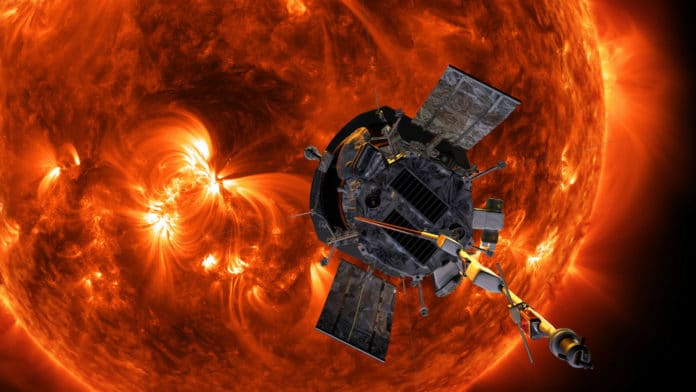Parker Solar Probe, a mission to unlock the mysteries of the Sun’s corona and solar wind. Using breakthrough technology and autonomy, the probe is collecting new solar data to help scientists understand how celestial events, such as coronal mass ejections, impact life on Earth.
On Jan 29, the probe has made its fourth close approach to the Sun, called perihelion. During the approach, the probe broke its records for speed and proximity to the Sun for a human-made object. The spacecraft reached a speed of 244,255 miles per hour (about 393,044 kilometers per hour) as it whipped around the Sun at a distance of 11.6 million miles (about 18.6 million kilometers).
Parker solar probe makes use of a heat shield known as the Thermal Protection System, or TPS, which is 8 feet (2.4 meters) in diameter and 4.5 inches (about 115 mm) thick. Along with speed records, the heat shield also reached new record temperatures. The TPS experienced a blazing 1,134 degrees Fahrenheit (612 degrees C), about 300 degrees hotter than encountered on the spacecraft’s previous three perihelia. The spacecraft and instruments behind this protective heat shield remained at a temperature of about 85 F (30 C).
On Feb 1, Mission controllers at the Johns Hopkins Applied Physics Laboratory in Laurel, Maryland, received a “status A” beacon from the spacecraft at 5:20 a.m. Status A signal indicates that the probe is operating nominally, and the instrument suites are collecting science data.
As the mission team learns more about operations and conditions in this region of space, they have increased the amount of time the instruments are on and gathering data. Parker Solar Probe’s fourth solar encounter phase began on Jan. 23, and the spacecraft will continue to acquire science data through Feb. 29, beyond the originally-planned end of the solar encounter phase on Feb. 4.
